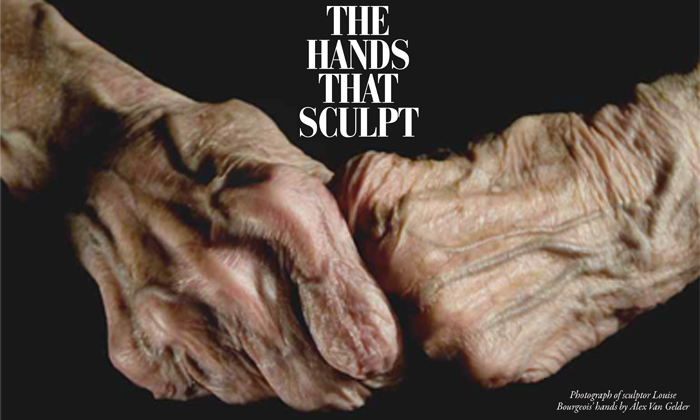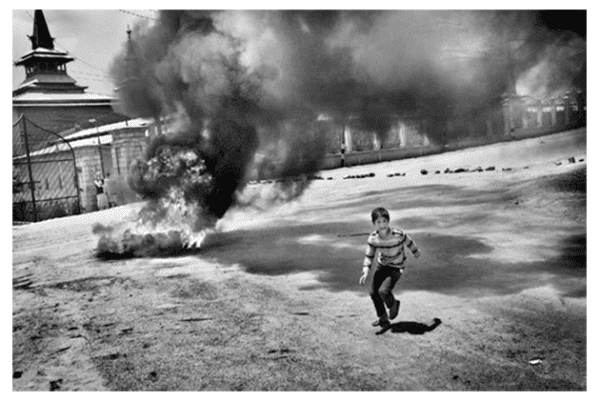“Man is born with his hands clenched; he dies with his hands wide open.” ~ The Talmud
Feral children use their hands for movement. This is one of the things that defines feral children inHumanimal: A Project for Future Children, a poetry/prose book in which Bhanu Kapil writes about Amala and Kamala, two wolf-girls allegedly rescued from the woods by a priest in Bengal, in 1921. Whatever the truth of the source matter[i], Kapil explores the limits of what it means to be human, what it means to be animal. She says: “To write this, the memoir of your body, I slip my arms into the sleeves of your shirt. I slip my arms into yours, to become four-limbed.”
Feral children use their arms as legs, their hands as feet.
There is a sense of the terrible in this. When we imagine two little girls loping along on all fours into the green, under the wild moonlight, our notion of the human is disturbed. We understand humanness by a specific use of limbs—legs for movement; hands for picking up, holding, gesturing, gesticulating, the cooking and eating of food, prayer. Hands are sacred. Feet are close to the ground, anti-sacred. When we touch someone accidentally with our foot, we apologise. Feet connect us to our lesser natures. When we use hands for what feet are meant to do, we are seen as regressing. Crawling connotes both infantilism and bestiality. The use of hands is laden with judgement, even in the simplest acts.
*
England, mid-winter, and I am at a restaurant in Leicester Square, London, valiantly attacking my spare ribs with a knife and fork. It’s hard to get all the meat. I’m hungry and increasingly frustrated as I think about this very expensive serving of lamb, the elusive slivers that slip out of reach, the bones that my knife keeps clicking off. I dare not stop trying. Two women at the neighbouring table get up to leave. One of them looks at me, smiles open-mouthed, full of amusement and complicity—“I’d eat it with my hands if I were you.” I smile back, in relief, in exasperation.
“Rarely on view is a woman’s hands on her own body, for her own pleasure. In some cultures, it is forbidden. In others, female sexual pleasure itself is violently prevented.”
I do not put down my knife and fork. It isn’t so much the cold winds sleeting across from London to Canterbury as the numerous times I’ve heard Indians back home, sniffing about the artless one in office, the dehaati, the ghaati, the diga, the one who eats with their hands.
Oprah Winfrey did not know that people in India still eat with their hands.[ii] During a recent visit to India, she sat down to a meal with a Sindhi family and asked if Indians “still” eat with their hands. She is not the only one to nurture the conviction that eating with one’s hands is primitive, somehow uncivilised and dirty. And that perhaps, those who eat with their hands are these things as well.
But this can be challenged in the oddest ways. Ra-One is a 2011 science fiction fantasy directed by Anubhav Sinha in which Shahrukh Khan plays a Tamilian IT professional. An early scene set in his home shows his apparent lack of sophistication, his simplicity, and overlaying this, like affordable laminate, his innate good-heartedness. He sits at the table with his family, his wife (Kareena Kapoor) resplendent, and his son scornful. He scoops up a slurry mix of noodles and curd with his hand. He chews heartily. What he eats and how he eats it, says many things. The family lives in London and on our screen is a tragicomic hero. Khan is supposed to be funny, but he is also supposed to be earthy and desirable as is evident by the presence of his beautiful wife. I think of his hands; beautiful, manicured actor’s hands slathered in curd.
Apparently, high-profile chefs in New York are now asking diners to eat with their hands so that they feel more connected to their food, less formal, more sensual. Eating is an act of desire, and desire sometimes involves the hands.
*
“In my films, bathing scenes recur often. Women in general occupy most of my early memories and they appear in my films like ghosts that refuse to be buried…There is a saying that human beings come into this world and go out of it naked. As for me I live in it naked. I have nothing to hide, everything to reveal…” ~ Raj Kapoor, filmmaker, quoted in an article[iii] in DNAIndia.com
Movies like Satyam Shivam Sundaram (1978) and Ram Teri Ganga Maili (1985) immortalised a certain type of bathing scene. A waterfall and under it, a woman sheathed in a wisp of white. The woman became all body and hands, with the sheerest clothing in the way. In these movies, the woman is imagined as an innocent—she does not know anyone might be watching. She is “pure”, virginal. She is merely enjoying water, air, the sense of these elements on her body. This naive enjoyment of her own body transforms into awareness when another enters the image, a man. She must always be interrupted in this moment of privacy. She can never enjoy such public space or such solitude. Her enjoyment must lead inevitably to a man’s desire and thereby, to his enjoyment. So whether it is within the script of the movie (for the hero), or outside it (for the viewer), the woman’s hands are placed on her body for the pleasure of the male. What is important is not that the woman is touching herself or what she gets from this touch. What is important is what men get from this touch.
Rarely on view is a woman’s hands on her own body, for her own pleasure. In some cultures, it is forbidden. In others, female sexual pleasure itself is violently prevented[iv]. This makes it difficult to imagine anything but the most practical use of a woman’s hands when it comes to her own body. Even in the most modern, the image is often embarrassing or charged with a particular kind of loneliness. In David Lynch’sMullholand Drive (2001), there is a scene where Naomi Watts masturbates. By this point in the movie, we know she is deluded; that the entire movie has been a wander down the rabbit hole inside her mind; and that she holds no keys for us because she holds none for herself. The camera focuses on her face while she masturbates, urgently, sobbing, not in relief or ecstasy but in despair and madness.
What about the woman pleasuring herself in/as joy?
*
Touching is complicated because it is integral both to love and to violence. When we speak to children, we speak of good touch and bad touch. What marks the difference between the two is intent, of course, but also location and pressure. It is hard to deconstruct these for a child, yet we try. ‘If someone touches you there,’ we say, or ‘if someone touches you like that.’ Even as we guide these missives toward them, tenderly, and with as much truth as we can muster, we know they are inadequate. It is impossible to describe every kind of touch that exists. Touch defies categories. It is fluid. Hands can be light and yet bear the weight of centuries. Hands can comfort and violate at the same time. So how shall we capture the language of touch? How shall we pin it down, as if pressing a moth between the pages of a book?
American photographer Imogen Cunningham was infatuated with hands, especially those of artists and musicians. She sometimes photographed them with their reflection, the shadow shapes in water[v] or a mirror. Perhaps, this is easiest—to see them in their reflection, to see them in their possibilities and in the shadows they cast, infinitely creative, kind, and cruel. So we go back to what hands make us, what hands make of us. We define humanness by our hands. These make us different from animals, we say. These elevate us.
Our hands.
[iii] Nuggets from Raj…, Bunny Reuben, 31 May 2008, DNAIndia.com; Retrieved from: http://www.dnaindia.com/entertainment/report_nuggets-from-raj_1167750
[iv] Female genital mutilation (FGM) includes procedures that intentionally alter or cause injury to the female genital organs for non-medical reasons. The procedure has no health benefits for girls and women. Procedures can cause severe bleeding and problems urinating, and later cysts, infections, infertility as well as complications in childbirth and increased risk of newborn deaths. About 140 million girls and women worldwide are currently living with the consequences of FGM. ~ World Health Organisation Factsheets (http://www.who.int/mediacentre/factsheets/fs241/en/)
[v] Aiko’s Hands, 1971, Imogen Cunningham, Imogencunningham.com: Available at http://www.imogencunningham.com/page.php?page=display&return=archive&menu=archive&print=POR05&index=0


